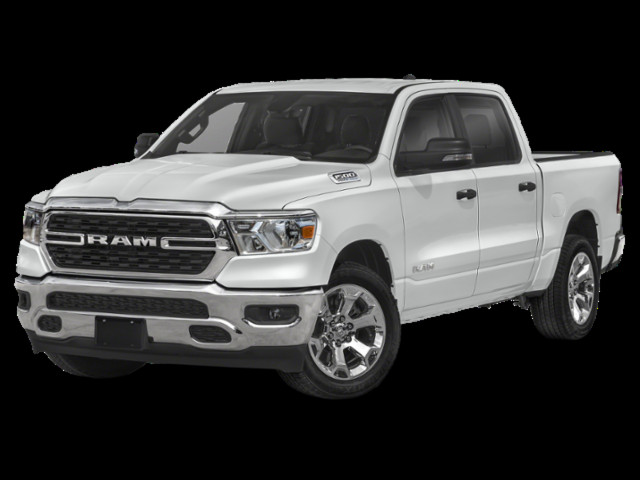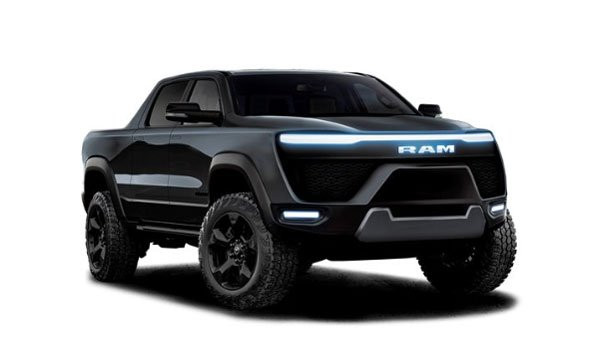The 2024 Ram 1500 Big Horn: A Look at the American Giant
The 2024 Ram 1500 Big Horn is the new, most affordable kid on the block within the Ram range. Following its local launch and ahead of the winding down of the classic DS series, I had the opportunity to sample this new entry point to the DT model.
Ram Trucks Australia set the scene for the current crop of full-size pick-up trucks in our local market, following exhaustive research, development, and testing. Pretty ballsy move too, given the cost involved, and level of research and development required for the importer that went on to set the standard for remanufacturing to right-hand drive. In simple terms, a hell of a lot of money went out the door before any came back in, and this was the first large-scale conversion effort in Australia, in contrast to the small businesses that had been doing it previously.
I know we love to call them utes, but these full-size US trucks aren’t. Not even close. The regular dual-cab brigade aren’t utes either, to be fair, but trucks like the 2024 Ram 1500 Big Horn are as far from a car-based ‘utility’ vehicle as you can get. Further, US trucks raise the bar a long way in every sense (aside from outright off-road chops) in regard to the more popular, smaller dual-cabs that dominate our local market. There’s a level of capability and comfort in a vehicle like the Ram 1500 that a regular dual-cab can’t hope to match.
Remember also that trucks like this 1500 Big Horn are the family vehicle of choice for American buyers outside the heavily populated cities. They are as common on US roads as medium SUVs are in our market. As such, factors like interior comfort and amenity are as important as long-haul touring or towing capability, and manufacturers like Ram have put decades of research and development into refining the platform. Like the Falcon and Commodore once symbolising what Australian motoring was about, full-size trucks in this segment symbolise the American market.
Is it Right for You?
Is a truck of this size for everyone? No – it’s 6.2 metres long with a turning circle of 15.2m. Trucks of this type are highly capable long-haul tourers, though, and capable of towing heavyweight trailers with ease. As such, that’s exactly what you should be buying one for, as opposed to those of you who commute into an office every day – unless you do plenty of towing on the weekend of course.
In rural areas, for example, any farmer or business owner we speak to who currently uses a 70 Series LandCruiser for work wants to know how the big US trucks perform. It’s also why you’re seeing more and more of them towing heavy trailers on rural roads. In rural areas, a Ram gets used for work as much as, if not more than, it gets used for recreational purposes.
Typically, when we review a US truck, there’s a vocal chorus of outrage from the brigade who like the idea of dictating what we can drive. That’s a whole different argument to have, though, but it’s a regular retort. You’ll find, however, in every review that Drive has undertaken, the assessment that if you live in the city or the urban confines, these really aren’t the tool for your trade. So, let’s make that point early, note it here and move on. However, if you need to tow regularly, carry large objects in the tray regularly, or you plan on some real long-distance touring, few vehicles come close to a truck like the 1500 Big Horn. We’ve said it before in video tests, or written it in road tests, the best thing you can do when you’re towing is do it safely, and a truck of this size makes light work of just about any trailer you can hitch up behind it. And if you tow regularly, that makes a big difference. Further, if you’re considering a custom canopy fitment to set your vehicle up for off-grid touring, few vehicles offer a better starting point.
Driving Dynamics and Comfort
Of the conventional four-wheel-drive contenders, only the Toyota LandCruiser 300 Series and Nissan Patrol can get anywhere near something like the Ram 1500 Big Horn in terms of connecting comfort towing capability. We’ve covered the ability of trucks like the 1500 Big Horn when towing previously, though, so this time let’s have a look how the DT Series’ most affordable variant copes with regular driving duties.
The Big Horn takes aim at the segment with sharp drive-away pricing – $114,950 drive-away for MY23 clearance stock at the time of testing. Focusing on the most affordable versions of the competitive set, the Ford F150 XLT short wheelbase starts from $106,950 before on-road costs, and the Chevrolet Silverado 1500 LTZ starts from $130,500 before on-road costs. Comparing the segment in Australia isn’t as straightforward as it might be, given the entry grade we get in Australia isn’t exactly like the entry grade on sale in the States. The importers have the opportunity to specify Australia-bound vehicles as they move down the production line, meaning we might benefit from some features that the same model won’t have in its local market.
In the Ram, for example, during the remanufacturing process here, all models – regardless of where they sit in the range – get the same premium dash finishing. In regard to standard equipment, though, the Ram 1500 Big Horn is priced competitively. Given this is the entry point to the range, you don’t get a full specification list like you do with the Laramie or Limited models, so there’s no traffic sign recognition, blind-spot monitoring, lane-departure warning, proprietary satellite navigation, surround-view camera or active cruise control. The infotainment system is a good one, clear and easy to use, but some of you might want a larger screen than the 8.4-inch unit provided. However, the lack of native satellite navigation is overridden by the inclusion of wireless Apple CarPlay and Android Auto, the former of which worked faultlessly for us on test. The Bluetooth phone connection was also rock solid when tested.
One feature you will notice most when you open the door is space. And loads of it. If you intend to carry five adults regularly, the Ram 1500 leaves everything but other trucks in its wake. Storage is also catered to effectively, and there is a 12V socket atop the dash, along with three USB-A and two USB-C ports up front. The driver gets a simple 3.5-inch screen that displays trip meter readings. The Big Horn’s seats get cloth trim that looks and feels robust enough for longer-term family or work use, and the second row features three ISOFIX points.
Safety and Performance
While the Big Horn is untested by ANCAP, it’s worth noting that LHD versions in the States (with the optional AEB and safety tech that we don’t get) were awarded either four or five-star ratings, depending on the model. You can use that testing as a guide only, if safety is right at the top of your list.
Any vehicle that wears a ‘Hemi’ badge evokes memories of legendary performance, and the 5.7-litre V8 that snarls under the bonnet of the Big Horn is as solid as you’d expect. The 291kW and 556Nm ensure any situation is handled with ease, and there’s a quality eight-speed automatic and part-time four-wheel drive. The Big Horn weighs in at 2572kg, and it’s lost some weight, too, given the use of aluminium where possible to reduce overall weight. Therefore, it’s not as heavy as you might expect.
Interestingly, this generation of the 1500 benefits from Ram’s ‘eTorque’ mild-hybrid system, which features a belt-driven generator and 48-volt electrical system to assist torque delivery, and work with brake regeneration and stop/start functionality. There’s also cylinder shutdown once you’re on the move, which drops the V8 down to a four-cylinder under cruising conditions. The question, then, is does the system result in real-world efficiency? Ram claims 12.2 litres per 100 kilometres on the combined cycle, which is more than fair for a truck of this size and capability. However, without trying to be frugal, on test we used as little as 11.9L/100km around town under light throttle application with a decent amount of 80km/h motorway running. A second specific test in heavier traffic saw that figure climb to 14.0L/100km. We’ll test the fuel use again when we complete our second round of testing, but the live figure on the highway dropped below the 12.2L claim, and in reality, anything below 15L/100km in the real world is a respectable return for a vehicle of this size and weight.
On the Road
Driving at night isn’t as illuminated as it might be thanks to the entry-grade’s halogen headlights, which still work, but not as well as the LED headlights found in the Laramie and above would. In effect, that’s the only real negative of the Ram 1500 Big Horn driving experience. A truck like the Ram 1500 Big Horn comes into its own when you hit the highway, hence our repeated reminders that these vehicles are best used for touring primarily. The relaxed nature of the drive experience is unmatched by any but the biggest of the four-wheel-drive brigade. The V8 is effortless, and the eight-speed automatic is smooth when cruising and snappy when you need it to be. While there’s no doubting the reality of the move to smaller engines, a V8 like the Hemi that Ram uses still makes a strong case as a workhorse given how easily it gets to work. On really poor road surfaces, you’ll feel the solid axle at the rear, but the ride compliance and comfort you get from the long wheelbase and coil spring suspension leave the leaf spring contingent in the dust. You need to factor in the wide turning circle, especially when you get close to the city, which is why tight city laneways are not its domain. The connection you get behind the wheel is solid too. Competent steering, good braking, and the aforementioned Ride Quality all mean the Big Horn doesn’t feel as big as it is once you’re on the move. General cabin refinement on the move is excellent, too, with a slight increase in wind noise at highway speed owing – probably – to the large mirrors.
Final Thoughts
We write this in Drive tests of Ram trucks every time we test one, but nothing really compares to this segment for those of you who need the capability. Ram remains an excellent contender, and the 1500 Big Horn delivers strong value for money. While it doesn’t get all the luxury of more expensive models, it does what buyers will expect it to do with ease and comfort. It’s another quality offering from Ram Trucks Australia, and if you’ve never driven one before your test drive, you’ll be surprised by how comfortable it is and how enjoyable it is to drive.


















